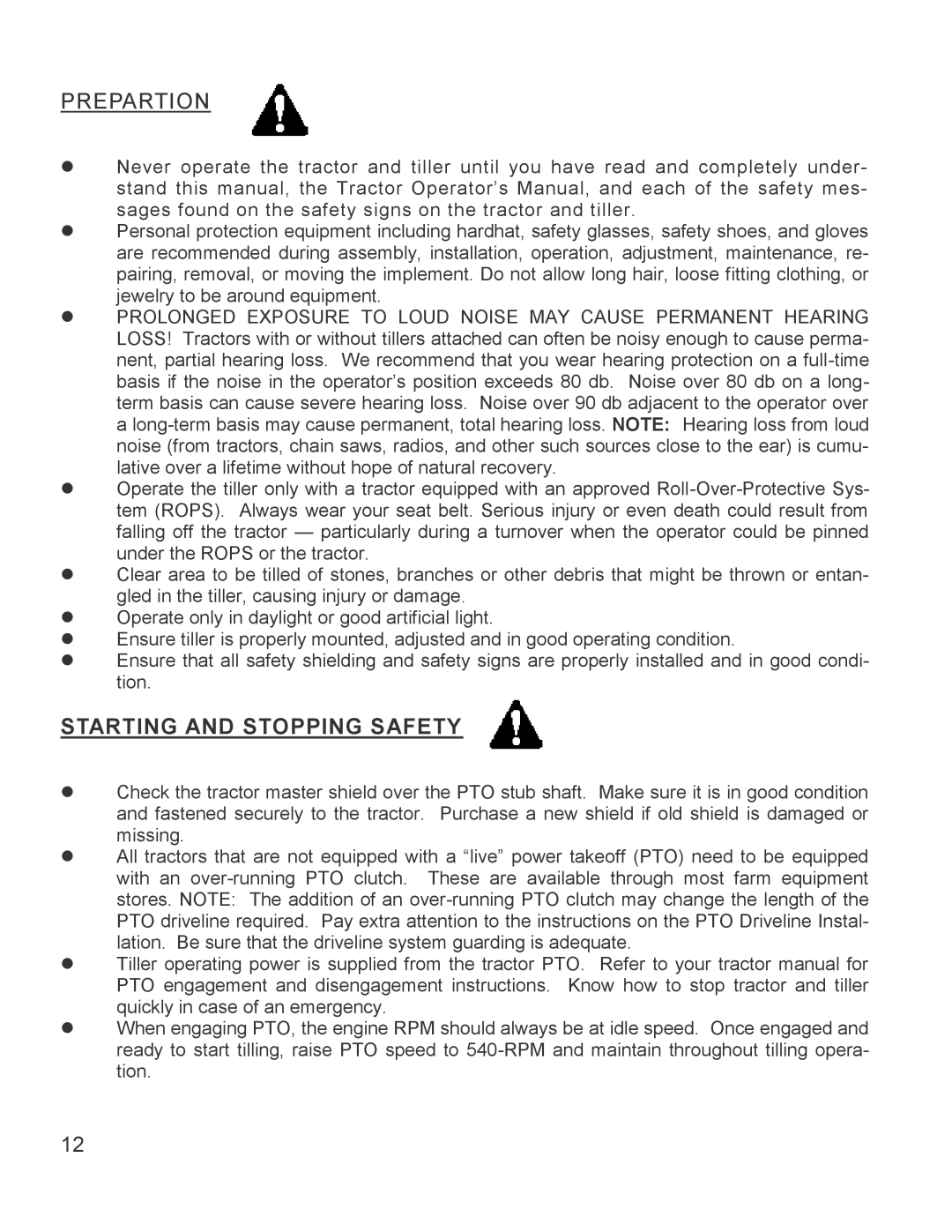
PREPARTION
Never operate the tractor and tiller until you have read and completely under- stand this manual, the Tractor Operator’s Manual, and each of the safety mes- sages found on the safety signs on the tractor and tiller.
Personal protection equipment including hardhat, safety glasses, safety shoes, and gloves are recommended during assembly, installation, operation, adjustment, maintenance, re- pairing, removal, or moving the implement. Do not allow long hair, loose fitting clothing, or jewelry to be around equipment.
PROLONGED EXPOSURE TO LOUD NOISE MAY CAUSE PERMANENT HEARING LOSS! Tractors with or without tillers attached can often be noisy enough to cause perma- nent, partial hearing loss. We recommend that you wear hearing protection on a
Operate the tiller only with a tractor equipped with an approved
Clear area to be tilled of stones, branches or other debris that might be thrown or entan- gled in the tiller, causing injury or damage.
Operate only in daylight or good artificial light.
Ensure tiller is properly mounted, adjusted and in good operating condition.
Ensure that all safety shielding and safety signs are properly installed and in good condi- tion.
STARTING AND STOPPING SAFETY
Check the tractor master shield over the PTO stub shaft. Make sure it is in good condition and fastened securely to the tractor. Purchase a new shield if old shield is damaged or missing.
All tractors that are not equipped with a “live” power takeoff (PTO) need to be equipped with an
Tiller operating power is supplied from the tractor PTO. Refer to your tractor manual for PTO engagement and disengagement instructions. Know how to stop tractor and tiller quickly in case of an emergency.
When engaging PTO, the engine RPM should always be at idle speed. Once engaged and ready to start tilling, raise PTO speed to
12
